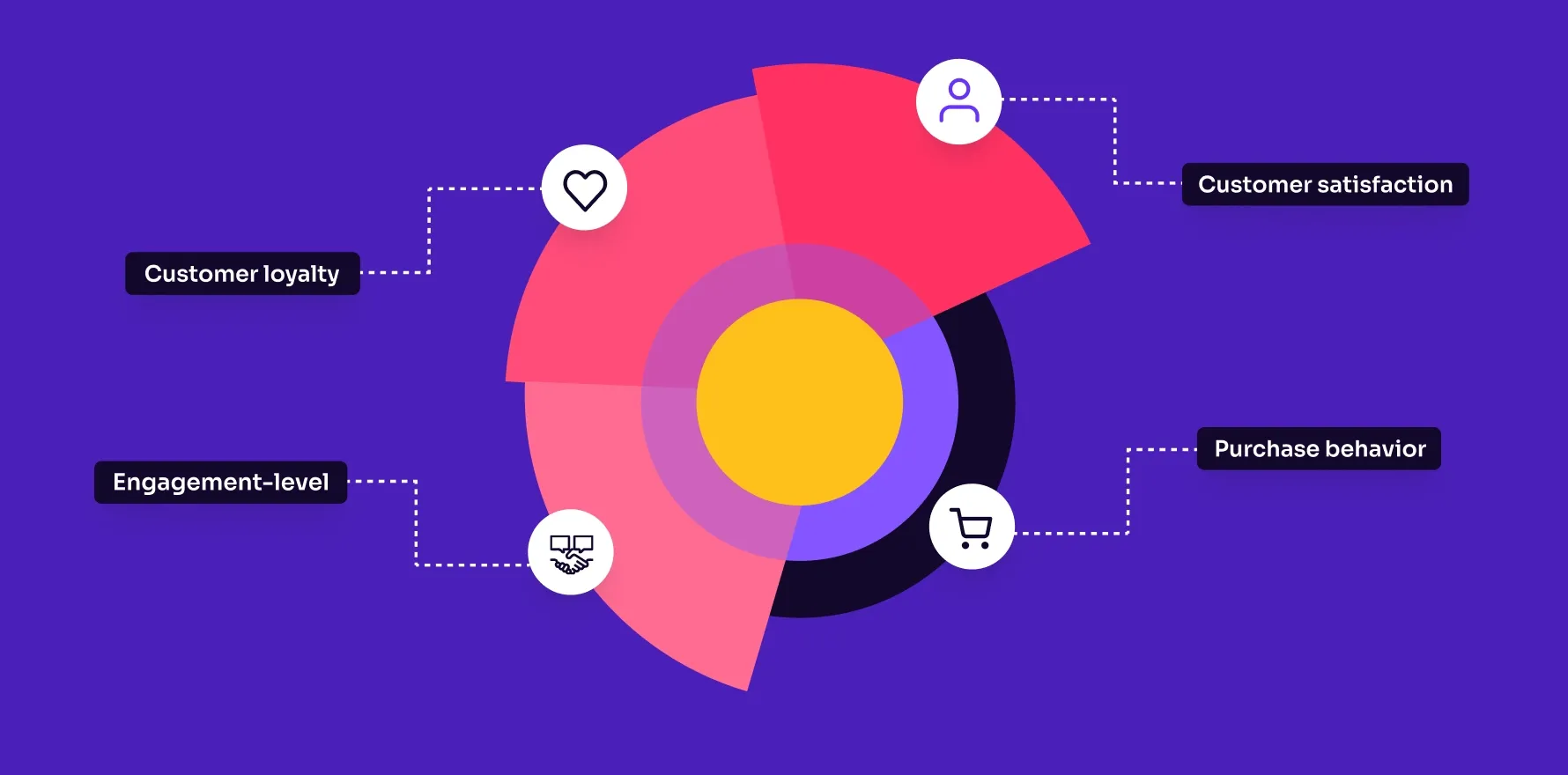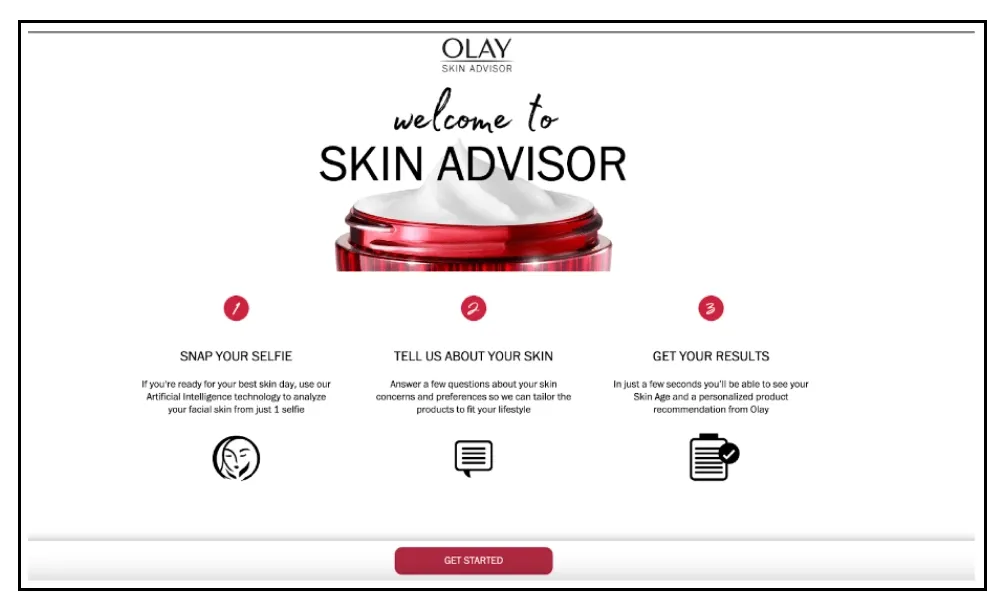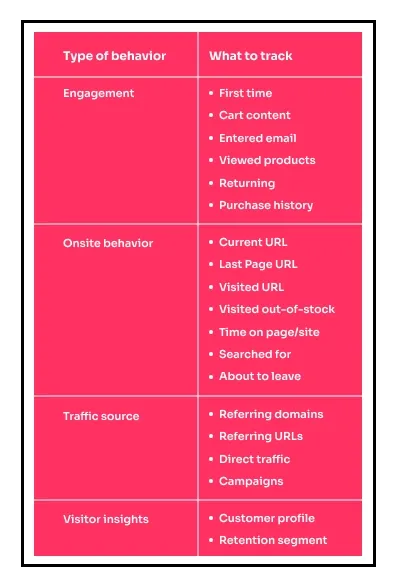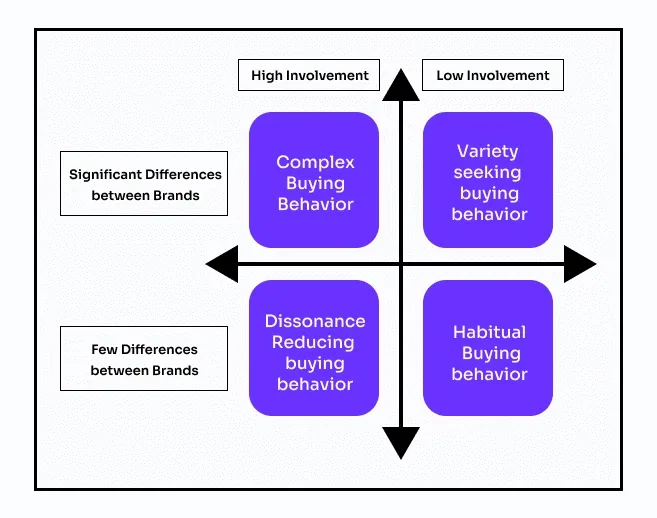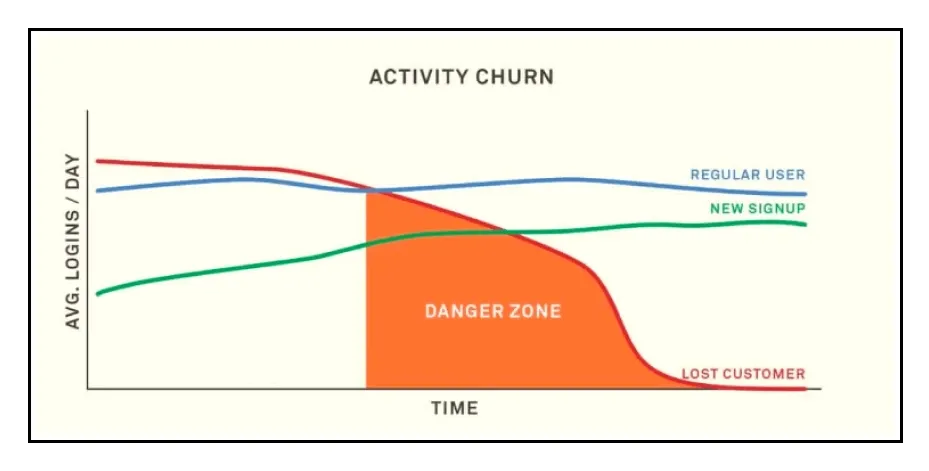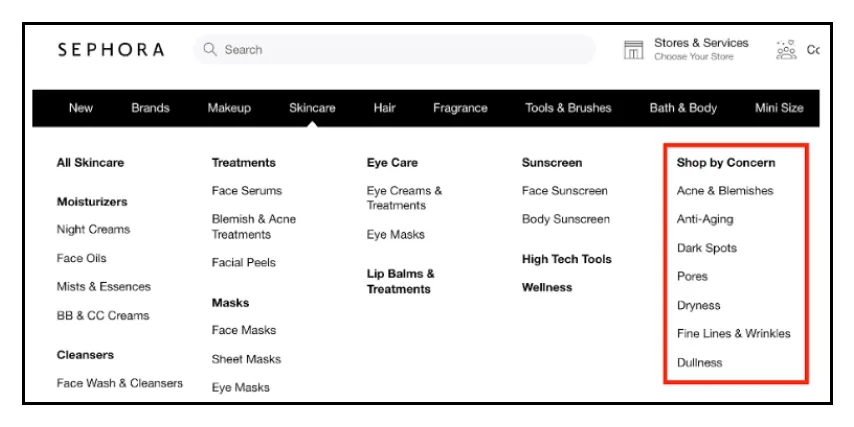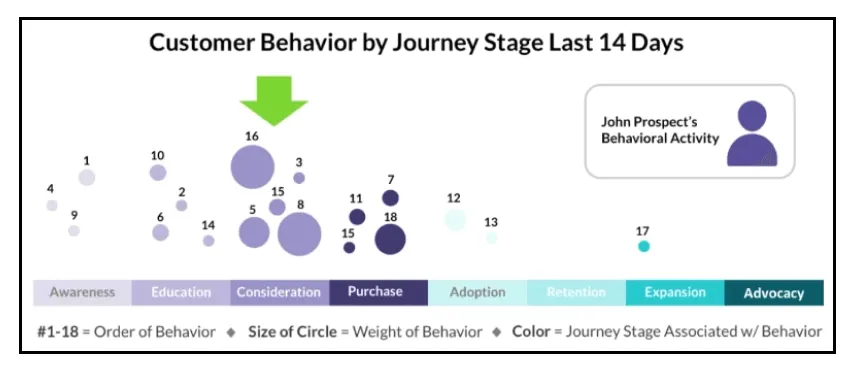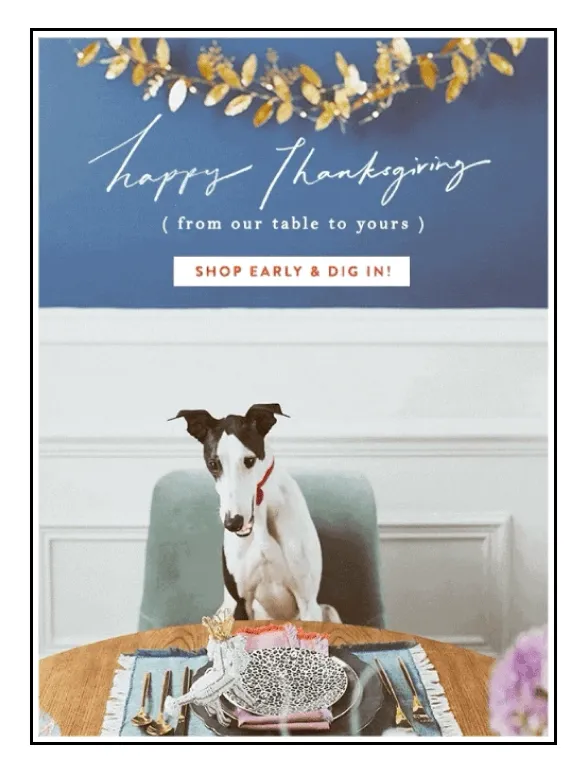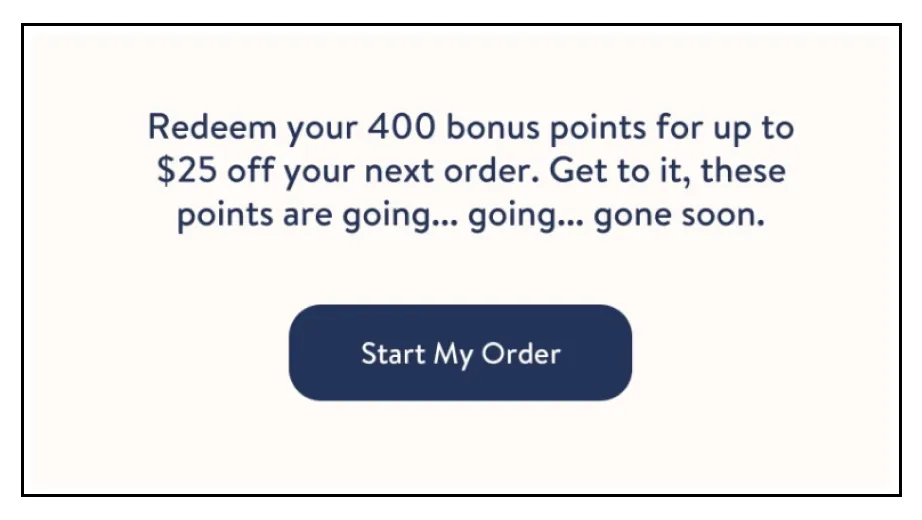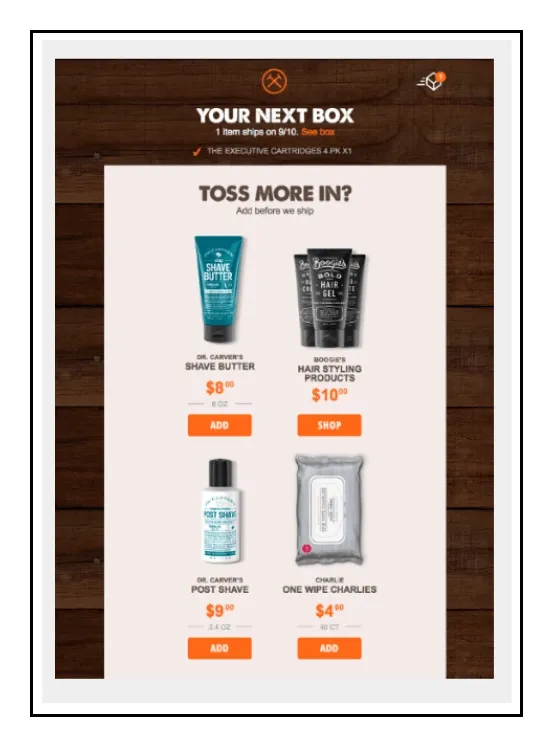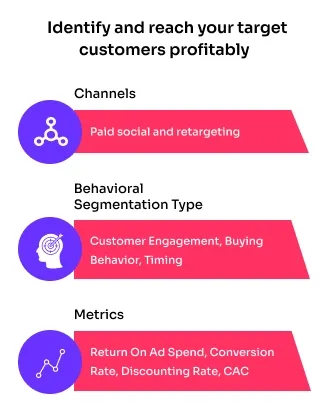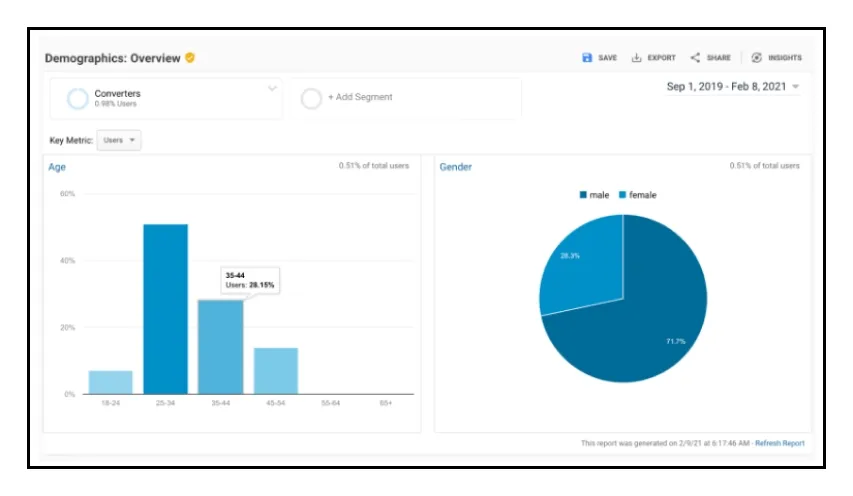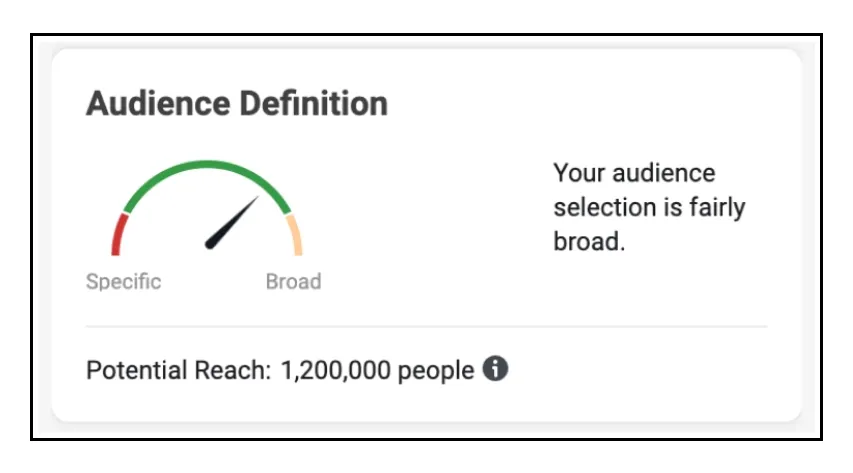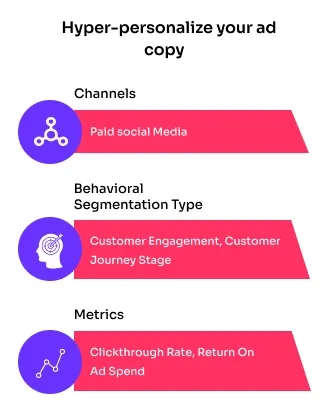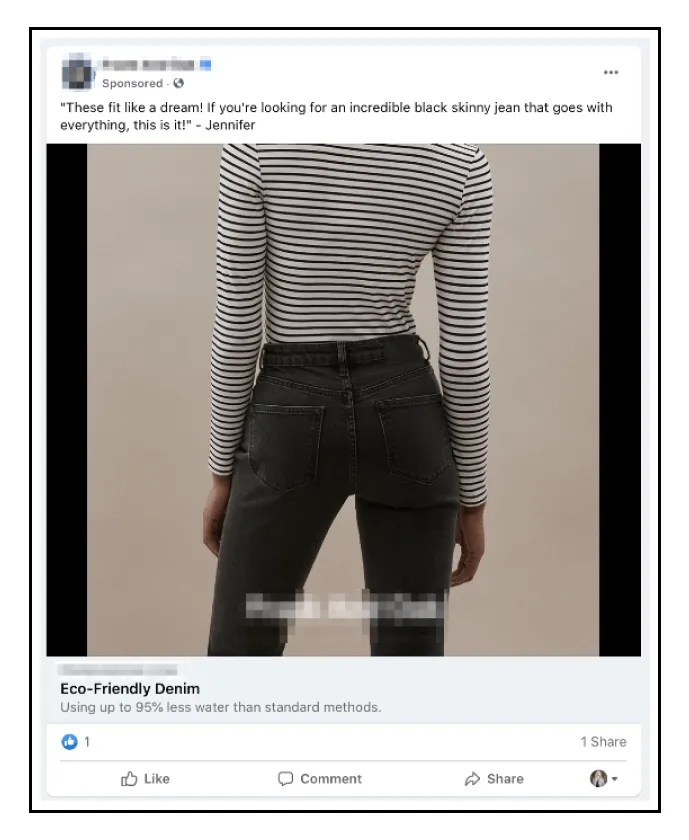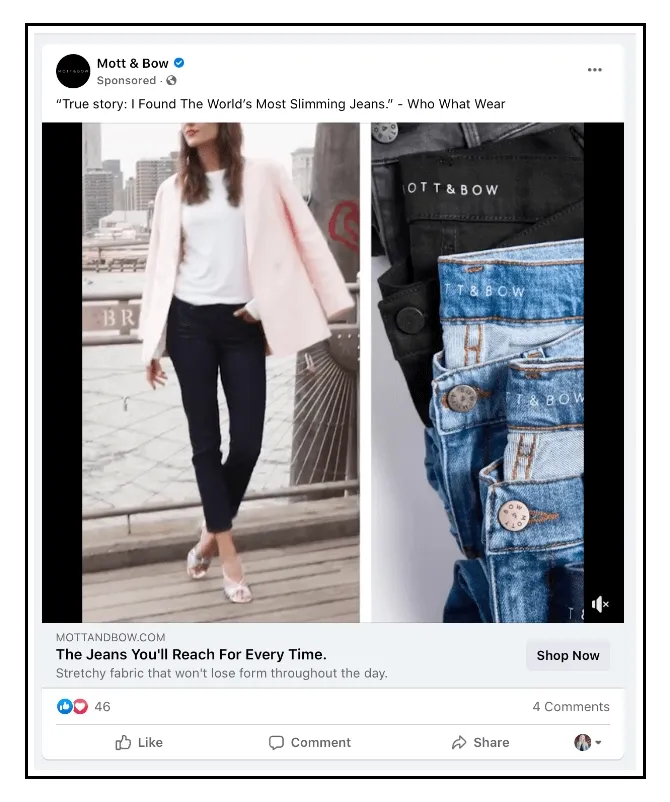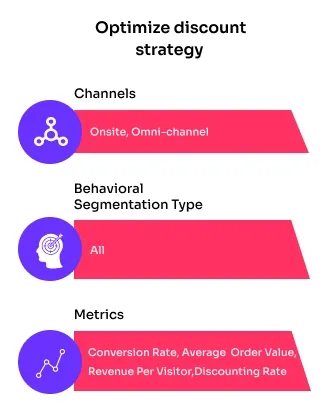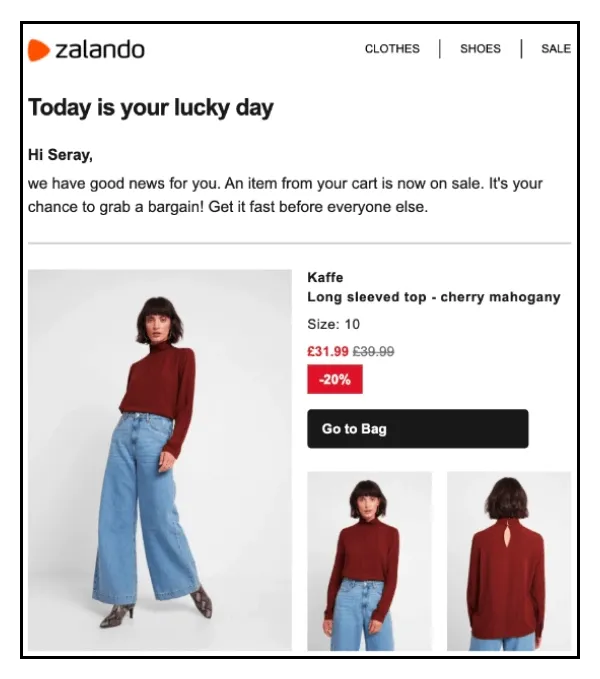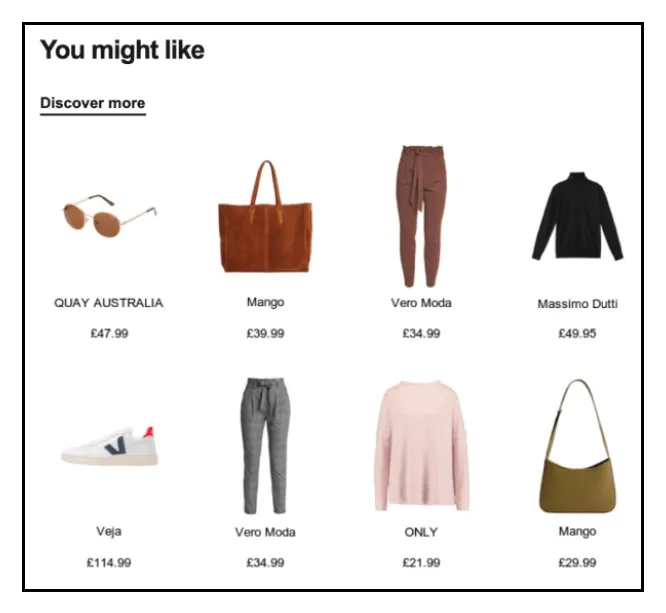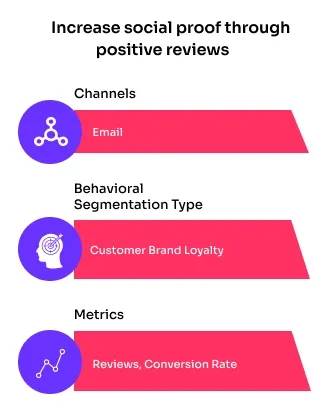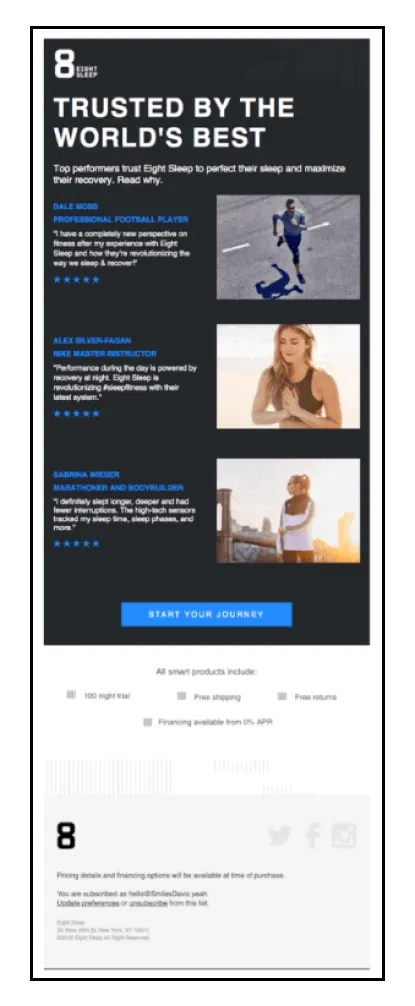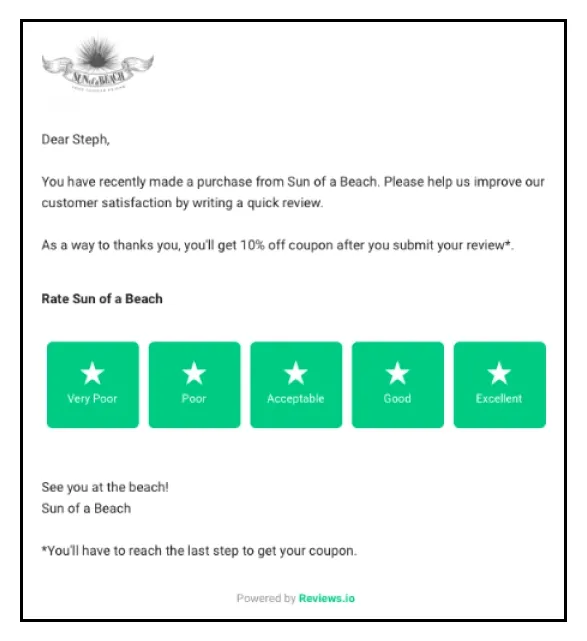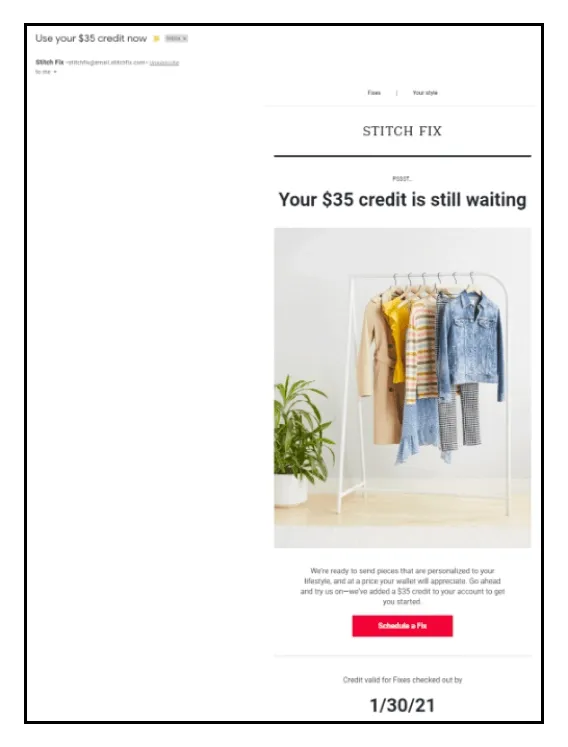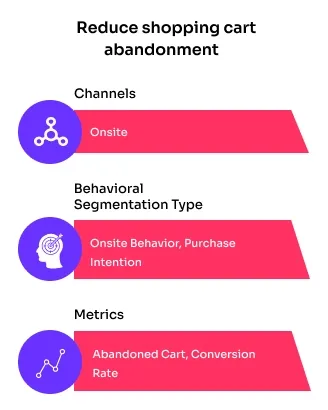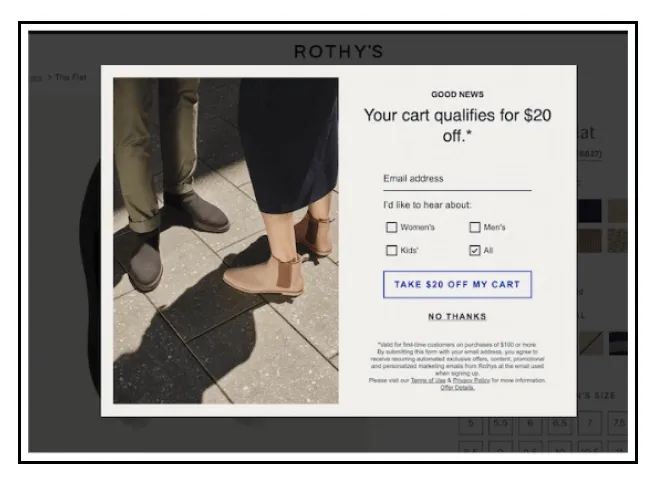Segmentation has been an important part of successful marketing campaigns. Dividing customers into smaller groups according to their actions, needs, affinities, or similar attributes ensures that you can solve their problems and in exchange, sell more of your products.
There is no denying that understanding information such as the buyer’s age, location, and gender are the essential starting points to begin addressing those needs. However, just understanding who your buyers are is not enough anymore. In the highly competitive DTC ecosystem, whilst demographics and psychographics can help you increase customer acquisition by serving ads to those who are more likely to fit within your buyer persona, that’s not enough. Your competitors are using the same demographics and psychographics to get in front of the same customers.
As a brand, leveraging additional customer data like behavioral data, is equally critical, as it helps you identify how your customers interact with your brand or products. Without this, the segmentation data collected might be rendered useless.
In this article, we’ll cover how DTC brands can use behavioral segmentation to personalize every customer touchpoint.
What is behavioral segmentation?
In the simplest words, behavioral segmentation divides customers into segments based on their behavior patterns. Based on this data, you can answer questions like “How many times did a customer visit your website before purchasing? Which promotional message – free shipping or promo code – is more likely to nudge them towards a higher-value product purchase?”
In the world of DTC, segmenting customers happens based on examining their online behavior:
- How long did they browse your website? (Dwell time)
- How quickly did they click off your site? (Bounce time)
- Are they new or returning customers?
- What do they add to the cart?
- How frequently do they abandon their cart?
Here’s a segmentation example from the skincare brand, Olay. Their mobile friendly-tool Skin Advisor asks potential customers questions about their skin and skincare routine and recommends products accordingly:
behavioral-segmentation-olay-skin-advisor
Behavioral market segmentation vs demographic segmentation vs psychographic segmentation: What is the difference?
Behavior based segmentation is less concerned with the customer’s age, how much they earn, or where they reside (which falls under demographic segmentation). Nor is it concerned with their personality, lifestyle, or values (which falls under psychographic segmentation).
Instead, behavioral customer segmentation in marketing focuses on the individual’s actions. A marketer should look at the customer journey of the brands target audience. What is the customer doing on the brand’s website or app right now? What behavior has the customer exhibited historically? At the very least, it offers marketers a more complete understanding of their audience, enabling them to tailor products to specific customer needs.
What behavior data points should DTC brands track?
behavioral-segmentation-data-points
Below, we take a look at the different types of behavioral segmentations.
Types of behavioral segmentation
There are several ways in which your customers will interact with your brand, product, or service and you’ll need to understand these behavioral variables to create an effective and sustainable segmentation strategy.
1) Purchase behavior – How do customers behave on their journey towards the purchase?
There are four categories of purchasing behavior:
- Complex – Let’s think about the work that goes into making the purchasing decision to buy a new house. Customers will be highly involved, research in depth, and then buy something that is an infrequent purchase.
- Dissonance-reducing – Imagine a customer is making a rather major purchasing decision, but there is not much difference between the products offered by different brands. For example, when purchasing a mattress, the decision might be based on the price and quality of the product instead of the design of the mattress.
- Habitual buying – When the purchase does not require much involvement or the product being offered does not vary much across brands, it is usually personal preference that matters. For example, there may not be much difference between Pepsi and Coca-Cola to impartial customers but some people would never choose one over the other.
- Variety-seeking – Say you are bored with fruit-scented shower gel and you choose an earthy-scented one. While they both clean your body just fine, you want variety.
behavioral-segmentation-purchase-behavior
2) Usage behavior – How often do customers use your products, and how?
This behavioral segmentation category looks at the frequency of customer interactions with your business as well as the nature of interactions. Further, they can be segmented into heavy, medium, and light customers and you can update your marketing campaigns to target these individual segments.
behavioral-segmentation-activity-based-churn
3) Benefits sought – What particular benefit is the customer seeking when they decide to purchase your product?
Customers might place a higher value on one benefit over another while choosing a product. Sephora uses the “Shop by Concern” category to find out what benefits and features are most important to each customer.
behavioral-segmentation-sephora-shop-by-concern
4) Customer journey stage – Where is the customer along the journey?
The journey, from the time a customer becomes aware of your product to the point where they’ve bought it and are telling others about it involves five touchpoints:
- Awareness
- Consideration
- Purchase
- Retention
- Advocacy
behavioral-segmentation-customer-behaviour-journey-stages
Segmenting the customer stage journey will reveal any pain points where the customer is unable to complete their journey. For example, during checkout, the brand may be running out of stock, highlighting a supply problem.
5) Occasion or timing-based – Which are the special occasions when customers buy from your DTC brand?
They can be:
- Universal occasions – When people make seasonal purchases like on Thanksgiving, Halloween, Black Friday, and so on.
- Recurring personal occasions – Anniversaries, vacations, or monthly/quarterly/yearly purchases.
- Rare personal occasions – Weddings, graduation, and baby showers that are hard to predict.
Here’s how Anthropologie gives customers an additional discount and early access to the Black Friday sale:
behavioral-segmentation-anthropologie-black-friday-sale
6) Customer satisfaction – How happy are your customers?
As your customer’s needs, wants, and experiences change in real time when they proceed through the purchase journey, the traditional NPS (net promoter score) doesn’t cut it anymore. Real-time behavioral market segmentation data is a more accurate and reliable measure of customer satisfaction.
behavioral-segmentation-nps-reliable-measure
7) Customer loyalty – Which are your most loyal customers?
It is critical to segment by customer loyalty because they spend the most time being connected with your brand.
They are cheaper to retain, have the highest customer lifetime value, and are brand advocates.
Behavioral segmentation helps you glean insights into their needs, so that you can find ways to maximize their value.
Here’s an example from Brooklinen, which offers customers incentives in the form of redeeming points on their next purchase:
behavioral-segmentation-brooklinen-customers-incentive
8) Interests – What are your customers interested in?
Interest-based behavioral customer segmentation can help you deliver personalized experiences that keep your customers engaged and coming back for more of it. This implies whether your goal is to increase product usage, provide upsell and cross-sell offers, or deliver the right communication to move them from customers to advocates.
Dollar Shave Club is known for its relaxed, unpretentious style. In order to help their customers have a better shaving experience, they send them gentle reminders in the form of cross-selling emails.
behavioral-segmentation-dollar-shave-club-cross-selling-email
9) Engagement-level – Who are your most (and least) engaged customers?
For both pre and post-purchase stages of the customer journey, engagement-based segmentation helps you know how excited customers are after their first purchase – through repeat visits or purchases.
10) User status – How frequently do customers use your product?
Another way to behaviorally segment customers based on how much they use your product/business is by:
- Prospects
- First-time customers
- Regulars
Now that you know what are the four main behavioral segmentation types and the other categories, you can use them for creating personalized experiences and offers, better targeting accuracy, and personalizing every customer touchpoint.
How can you use behavioral segmentation to automate growth?
Let’s look at seven examples of behavioral market segmentation for DTC brands to improve conversion metrics like click-through rate, average order value, revenue per visitor, customer LTV, and so on.
1) Identify and reach your target customers profitably
behavioral-segmentation-customers-profitably
Let’s suppose you are a DTC brand selling sustainable clothing. Your audience is men between 25-44 years of age. If you’re looking to advertise on Facebook, you’d start by choosing the geographies of users. For instance, the USA, Canada, and the UK are where the majority of your users are concentrated.
behavioral-segmentation-demographic-overview
Now, if your brand were to target based on demographic segmentation, your audience would be as broad as 60 million people.
Next, you could use psychographic segmentation by adding interests such as Shopify, BigCommerce, and so on to narrow down your target audience and qualify prospects.
Even then, the target audience is 1.2 million people.
behavioral-segmentation-audience-defination
Of course, you’ll have to narrow down the audience further, to refine your messaging and drive the CAC (customer acquisition cost) down.
Now, you could use behavior based segmentation to build audiences of people who have shown interest in similar products to deliver personalized ads.
Behavioral segmentation serves as a powerful opportunity in digital marketing to drive ROAS (return on ad spend) and CAC.
2) Hyper-personalize your ad copy
behavioral-segmentation-personalize-ad-copy
While demographic and psychographic segmentation helps you improve customer acquisition by showing your ads to people most likely to fit your buyer persona, behavioral segmentation helps you stand out. It makes the potential customer feel like your product was specifically designed for their needs.
Let’s compare Facebook ads from two different denim brands.
Brand A:
behavioral-segmentation-comparing-facebook-ad
Brand B:
behavioral-segmentation-mott-and-bow-facebook-ad
At first glance, both might appear to be ads for jeans. However, Mott and Bow took it further by adding a customer testimonial to the ad copy:
behavioral-segmentation-mott-and-bow-facebook-ad-text
Once you’ve attracted potential customers with targeted marketing messages, it is equally important to ensure they stick with you throughout the purchase journey.
3) Optimize discount strategy
behavioral-segmentation-discount-strategy
Naturally, you don’t want to show discounts to everyone who visits your brands website or social media channels. Instead, use behavioral customer segmentation to offer discounts sparingly. For example, you want to offer a discount to customers who visited your website and added items to their cart but abandoned it without making a purchase. You could show them a discount both onsite and over email.
The clothing brand Zalando informs customers that the items they added to their cart before abandoning are now on sale:
behavioral-segmentation-zalando-sale-on-cart-abandonment
What’s remarkable, after reminding about the cart items, the brand recommends similar products that the customer might be interested in, to increase the average order value.
behavioral-segmentation-zalando-you-may-like
4) Increase social proof through positive reviews
behavioral-segmentation-social-proof
Shoppers who interact with customer reviews are 58% more likely to convert and even have a 3% higher average order value. Genuine and quality reviews count, even more so for customers in the complex and dissonance-inducing buying behavior segments.
Have you ever thought about using customer reviews through behavioral segmentation? For example, you could add customer testimonials to emails for repeat buyers, cart abandoners, customers who are a part of your loyalty program, and even those considering opting for brand membership.
This email by mattress brand Eight Sleep has three testimonials from high-profile customers from fitness and sports:
behavioral-segmentation-eight-sleep-testimonials
For the same set of customers, after they’ve purchased your products, you could send them an email asking for feedback/reviews. This way, you can reach out to dissatisfied customers, and win them back by making things right, the way Sun of a Beach does:
behavioral-segmentation-sun-of-a-beach-feedback-survey
5) Personalize customer experience to optimize the conversion funnel
behavioral-segmentation-conversion-funnel
Marketers know how expensive off-site targeting is. Thankfully, on-site you can use behavior based segmentation to personalize the customer experience and optimize the conversion funnel. The key is to use intuitive pop-ups that are personalized to each shopper’s in-session behavior. These pop-ups would be triggered through automation based on the number of sessions, cart value, and historical and real-time browsing behavior.
Stitch Fix, the online styling service, is a great example here. Once the customer takes an initial fit assessment, they are given a series of offers, nudging them to complete their first purchase.
If the customer has still not bought, a new activation campaign is triggered – this time offering a $35 credit that can be used:
behavioral-segmentation-stitch-fix-conversion-funnel
6) Reduce shopping cart abandonment
behavioral-segmentation-shopping-cart-abandonment
Shopping cart abandonment rate remains the biggest pet peeve for ecommerce and DTC websites alike. The average shopping cart abandonment rate across all industries is almost 69%!
behavioral-segmentation-rothy-exit-popup
Rothy’s is a DTC brand that makes washable shoes and bags with recycled material. Their cart abandonment exit pop-up is shown on the checkout page the moment a customer who has an item in their cart moves the mouse away from the site.
Why this segmentation works is because along with reminding customers that they’re leaving items in their shopping cart, it also offers an immediate discount and incentivizes shoppers to subscribe to the brand’s content.
7) Upsell and cross-sell with product recommendations
behavioral-segmentation-product-recommendations
Personalized on-site product recommendations account for upto 31% of revenue on ecommerce sites, as per Barilliance. Dynamic on-site product recommendations based on visitor data, behavior data, and session history offer an opportunity to upsell and cross-sell your products.
Based on what the customers are interested in, DTC brands can create better offers.
The example below is a classic cross-sell example of behavioral segmentation by Net-a-Porter. The row below the main product is a collection of products that cross-sell and upsell the main product on the page:
behavioral-segmentation-net-a-porter-cross-selling
Wrapping up
The bottom line is that behavioral segmentation is extremely important to uncover data trends and insights that you may have otherwise missed out.
By segmenting customers based on their behavioral data, it becomes easier to predict what products would your customers engage with. In addition to this, you can create relevant marketing campaigns and personalized content and offers that resonate throughout the customer journey. This ultimately leads to reduced customer churn, higher sales, and boosted revenue.
You may also want to read about RFM analysis to understand how to create profitable segmentation.
You may also like
Essential resources for your success
